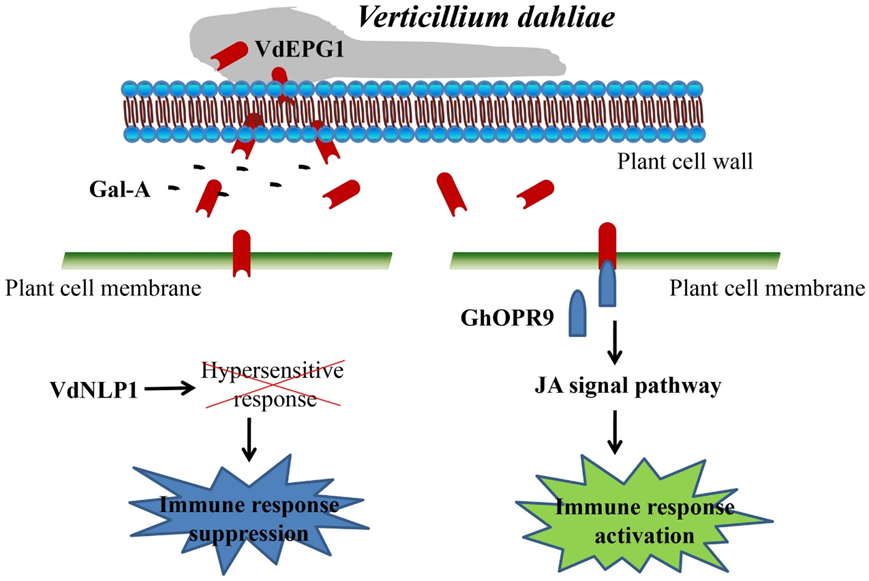- Location : Home» Newsroom
Revealing a new mechanism of interaction between Verticillium dahliae and cotton
Recently, a research entitled “The glycoside hydrolase 28 memberVdEPG1 is a virulence factor of Verticillium dahliae and interacts with the jasmonic acid pathway-related gene GhOPR9” has been published byMolecular Plant Pathology. In this paper, Institute of Cotton Research (CCRI) researchers reportas a virulence factor, VdEPG1interacts withGhOPR9in regulating host resistance to Verticillium wilt, revealing the pathogenic mechanism of V. dahliae from a new perspective, enriching the theoretical system of interaction between pathogen and host.
Cotton Verticillium wilt caused by V. dahliae is a soil borne vascular bundle fungal disease. Due to the complex pathogenic mechanism of the pathogen, the interaction mechanism between the pathogen and the host is not clear, which has become a key problem for effective control of this disease.In this study, VdEPG1 positively regulated the pathogenicity of V. dahliae by regulating its growth and development, furthermore, VdEPG1 suppressedVdNLP1-mediatedcell death by modulating pathogenesis-relatedgenes in Nicotianabenthamiana.Ajasmonic acid pathway-relatedgene, GhOPR9, was identified as interacting withVdEPG1, inducing plant immune response to help cotton resist the infection of V. dahliae. These results provide theoretical support for effective control of cotton Verticillium wilt and disease resistance breeding.
This study was funded by the National Natural ScienceFoundation of China (32172081) and the Natural ScienceFoundation of Xinjiang Province (2022D01E101).Researcher Heqin Zhu and Hongji Feng from CCRI are co-corresponding authors,doctoral studentShichao Liu and postgraduate RuibingLiu and JunyuanLvare the co-first authors.
The article can be found: https://doi.org/10.1111/mpp.13366

Fig 1. Schematic model ofthe interaction between VdEPG1 andGhOPR9